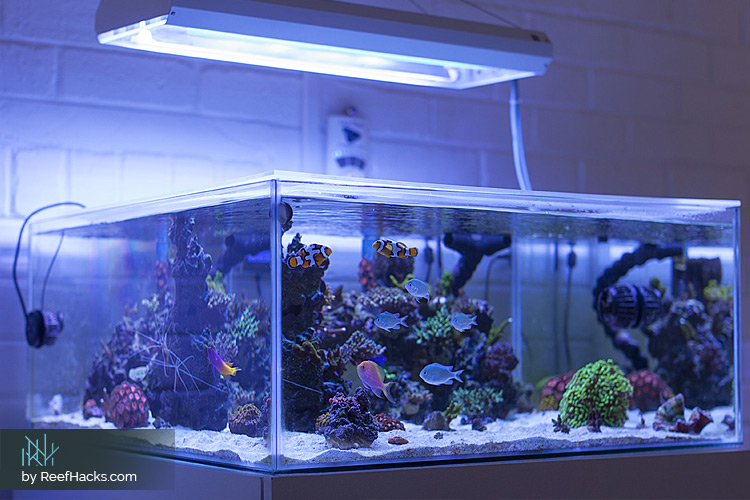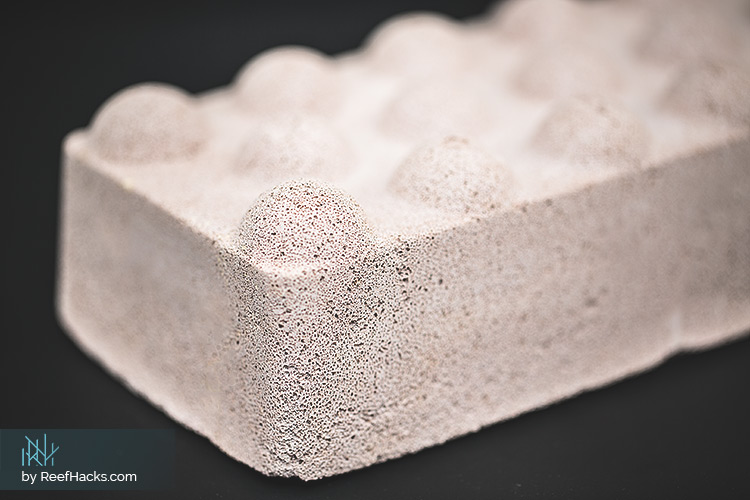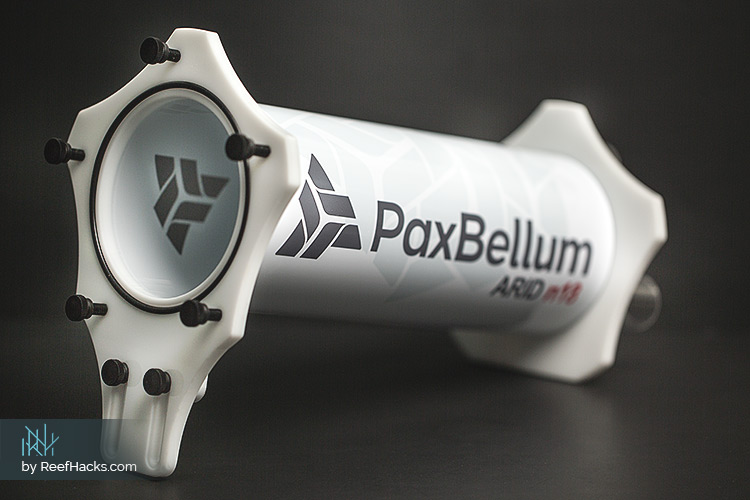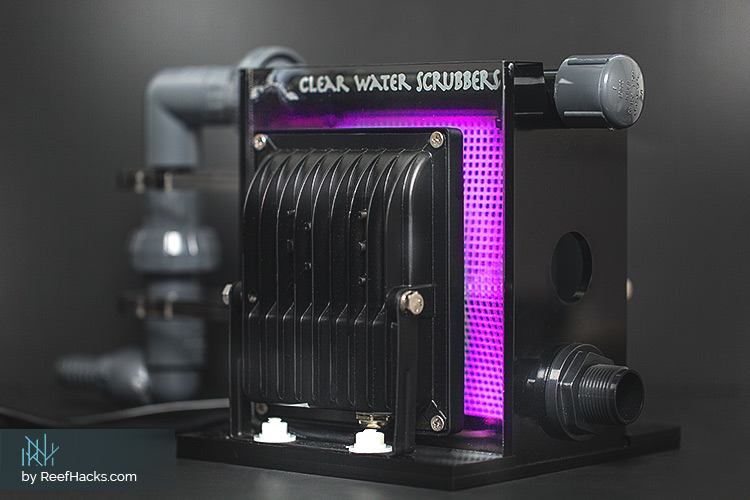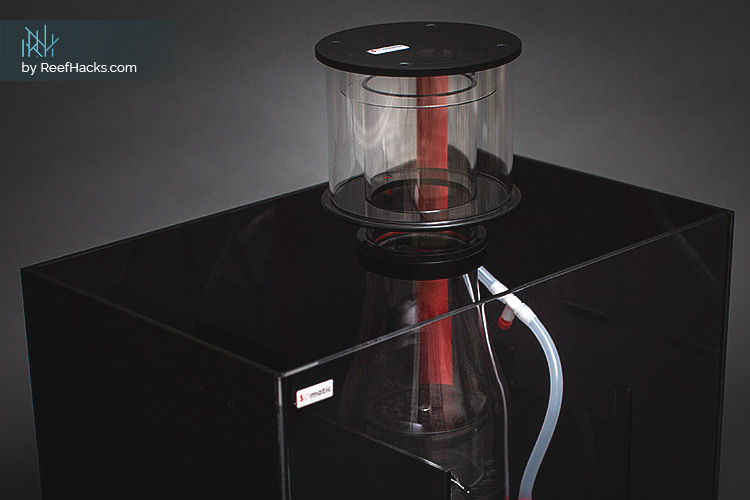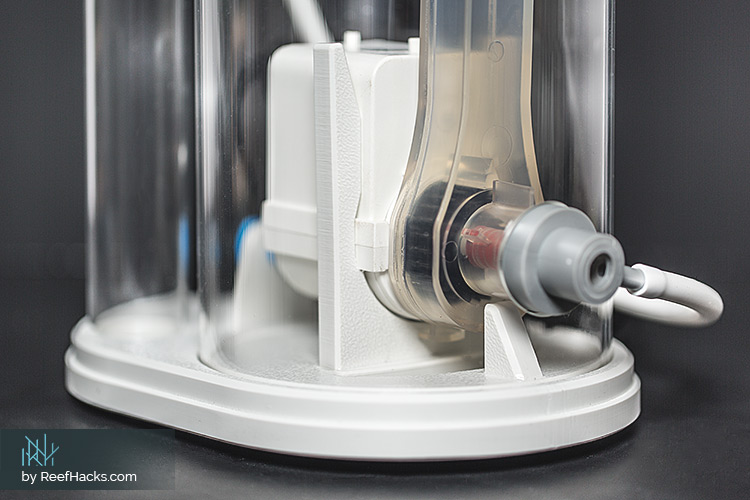Whether snorkeling in warm tropical waters, or admiring an established reef aquarium, coral reef waters are bustling with life. Even to the untrained eye, it’s obvious these microcosms are unique, but as you learn more about the biological tapestry of natural coral reefs, its intrigue adopts a different hue.
As reefers, we utilize a myriad of systems and devices to simulate the natural world. From high-tech dosing equipment to advanced nutritive supplements, echoing the delicate balance of natural seawater is harder than you may think.
But why?

Author:
As a lifelong aquarist, Yuliya has an endless curiosity about our underwater universe. After graduating with a bachelor’s in Environmental Engineering, she transformed her passion into a successful career. While working at the Institute of Environmental Protection in Moscow, her passion for saltwater and reef aquariums only increased. Moving to the United States in 2013, Yuliya embarked on another impactful journey by sharing her unprecedented experience for all aquarium hobbyists ... Read More.
This question, in all its simplicity, is one of the hardest answers to clearly define. Reproducing the complexities of coral reef waters has baffled scientists and aquarists for decades. Even though reef ecosystems contain an unimaginably dense biomass, its natural seawater is shockingly low in nutrients.
Seems unbelievable? Well, you’re not alone. This contradiction has long confused scientists, which resulted in what’s known as the Paradox of the Coral Reef. While our understanding of the biochemical processes of natural reefs is greater than ever before, the concepts of nutrient control remain under investigation.
As a lifelong aquarist, knowing there’s so much more to discover about the underwater world I love so dearly is beyond exciting. Not only because this knowledge can help protect and save some of the most beautiful locations in the world, but the more we understand, the more brilliant our hobby becomes.
Since the beginning of the 21st Century, the reefing hobby has grown faster than all other years combined. In my opinion, the technological and scientific breakthroughs have ushered all aquarists into a new era of possibilities. As I recently told a gathering of novice aquarists, this age of reefing enlightenment has answered many problems, but in doing so, an entire new world of questions was born.
Few topics demonstrate this as clearly as nutrient export and control. After all, a concept once universally classified as a paradox isn’t one capable of being mastered from buying into a specific export method. In reality, these methods are as unique as the shapes and designs of reef inhabitants.
By now, you’re probably wondering if nutrient export methodologies are even worth trying to understand. Well, my dear reefer, what kind of hacker would I be if my advice was nothing more than discussing the challenges of nutrient control. Not a very good one, if you ask me.
Thankfully, that’s not the case.
Here’s the most essential tips and hacks you need to choose your best nutrient export method. If you’re looking for more detailed advice, be sure to download our Official Free Nutrient Export and Control eBook that we are releasing soon, stay tuned and subscribe to our newsletter to get a notification when it's ready for download. Within its pages, we discuss the latest methods, equipment and hacks to take you from complete novice to confident aquarist. Along with the Free eBook, you'll get an amazing bonus, tips from the most trusted people in the reefing hobby, don't miss it!

Wait... Aren’t Nutrients Healthy? A Quick Explanation.
Several weeks ago, I met a new reefer, her name is Alice. Like so many novice reefers, Alice was a longtime admirer of natural reefs, and finally decided to take the plunge into the rewarding waters of reef keeping. In her excitement, she purchased an entire aquarium system with the unfortunate belief tending to a saltwater aquarium was relatively as straightforward as freshwater tanks.
She quickly changed her tune.
During our initial meeting, I recognized the look behind her eyes. With excitement she spoke about her goals, but in a matter of seconds, her entire demeanor shifted into what I can only describe as the look of a student who didn’t study for the midterm. Frazzled and frustrated, Alice spouted question after question in a desperate attempt to understand the world she’s found herself drowning in.
Eventually, the topic of nutrient control worked its way into our conversation. Tilting her head to the side, she asked, “Oh, nutrients? Aren’t those good, though? I mean, why get rid of them? Is it so you can customize something?”
My beloved reefer, this question is one I’ve heard more times than I can remember. In fact, I wouldn’t be surprised if this is the reason you stumbled upon this guide.
In the most simplified answer, no. When the topic of nutrient control comes up in the reefing community, it’s not the type of nutrients an organism requires for health and vitality. So, what are these toxic nutrients? Here’s a quick breakdown of the two most important nutrients we export:
- Nitrates (NO3) - As a natural byproduct of the nitrogen cycle (dissolved organic compounds > ammonia > nitrite N02 > nitrate NO3), nitrates are toxic when its levels become too high.
- Phosphates (PO4) - Derived from phosphorus, this organic chemical compound comes from low quality water, fish food and fish waste. Excessive phosphate levels can promote nuisance algae growth and slow coral calcification, while too low levels can literally starve corals.
Other nutrients that require exporting include:
- Ammonia.
- Nitrite.
- Dissolved Organic Compounds (DOC).
Important: Remember, the primary goal isn’t to 100% eliminate nutrients. In fact, doing so is just as dangerous to tank life as having excessive levels. To achieve the pinnacle of tank health, nutrient levels must remain consistently low. Ergo, the terms: nutrient export and nutrient control.


Biological Filtration Method - Letting Nature Take the Wheel.
Considered a favorite by many reefers, biological filtration leverages the natural exporting and control mechanisms of bacteria. Essentially, biofiltration works by growing specific bacteria in your tank. In a simplified explanation, biomedia maintains proper nutrient levels by:
Exporting Nutrients - Biomedia offers a surface for bacteria to grow, which are then converted into harmless elements.
Controlling Nutrients - The rate of nutrient export is directly related to the quantity, or population, of bacteria. Therefore, it’s easy to maintain a consistently low level of harmful nutrients by only offering a specific sized surface area. This controls how large a bacteria population may grow.
In our eBook, we discuss the various biomedia options like XPort Bio Brick and mechanisms this filtering method uses.
Here’s what you need to know about biological filtration:
Always use a high-powered skimmer. As bacterial colonies grow, skimmers are necessary to keep bacteria growth/concentration at a desirable level.
Support healthy bacteria population through supplementation, aka dosing, by using a specific formulation, such as those offered by Prodibio.
Compared to other nutrient export methods, biofiltration is considered the easiest. Because microorganisms do the work for you, as long as you ensure biomedia is properly contained and regular maintenance is performed, such as water changes, this method is relatively hands-off/automated.
When using live rocks, be sure to carefully scrutinize and quarantine the rock before placing in your aquarium. It’s not uncommon for a live rock to have either harmful hitchhiker's or introduce bacteria that doesn’t mesh with an already-established tank bacteria colony. For this reason, many reefers prefer dry rocks.


Natural Filtration Method - Letting Nature Maintain Balance.
It’s common to assume natural filtration is the same as biological methods. Sure, both methods achieve nutrient export via organic organisms, but this is where similarities come to an end. Let’s briefly explore the primary concepts and considerations of natural filtration methods:
Algae - Think all algae is harmful for your tank? Think again! Algae, more specifically Chaeto Algae, is the foundation of natural filtration. Essentially, algae exports harmful nutrients by using these compounds as a food source.
Control - The rate of nutrient export is directly related to algae population, which is easy to manage with Chaeto reactors. By fostering a specific amount of algae, you’ll achieve sustained and balanced exporting, which is important for overall tank health.
Equipment - There are two main natural filtration methods: Chaeto Reactors and Algae Scrubbers. Here’s what you need to know about each:
- Chaeto reactors are cylinders specially designed to control and manipulate algae growth, such as preventing reproduction by eliminating dense patches of algae and offering even light exposure.
- Algae Scrubbers are containers with a specialized mesh, which is where algae is grown. Water passes over the algae to export nutrients.


Mechanical Filtration Method - Man, Machinery and Coral?
While biological filtration methods export and control nutrients via biochemical conversions, mechanical filtration methods simply collect and dispose harmful nutrients. In the most simplified definition, mechanical filtration captures particles. To actually export these collected nutrients, you must physically clean or replace your filtration media.
Here’s the most important takeaway about this method: do it regularly!
If you can’t regularly clean the filter, toxic nutrients will accumulate, and eventually overflow. Those who aren’t the “hands on” type, will find this nutrient export method tedious, and in some cases, ineffective. Of course, if you can remain vigilant when it comes to cleaning the filter, then this method can be very effective.
Here’s what you need to know about mechanical filtration:
- Its function is strikingly similar to that of a standard air filter. Of course, there’s the risk of beneficial particulates becoming trapped, such as planktonic microfauna.
- Filters can be an untented breeding ground for unsavory organisms, such as nitrifying bacteria. Prevention requires regular filter media replacement and constant water testing to ensure any unwanted growth isn’t altering water parameters beyond what’s recommended. Remember, excessive nutrient level fluctuations are equally as harmful.
- Common mechanical filter equipment include: filter floss, pads, foams, sponges and filter socks. Protein skimmers are also a form of mechanical filtration, but unlike its equipment counterparts, skimmers play a vital role in maintaining tank health, regardless of method.

Chemical Filtration Method - Chemistry You’ll Want to Learn.
Are you looking for a cooler way to export and control nutrients? Okay, maybe chemical filtration methods aren’t leather jacket-wearing, motorcycle-driving levels of coolness, but if you’re interested in manipulating the molecular realm of your tank, then this method may tickle your fancy.
Like biological filtration, this method controls nutrients by altering the biochemical construction of nutrients. However, instead of microorganisms, chemical filtration leverages precise chemical formulas to achieve its desired result. Although its name conjures images of lab coats and bubbling beakers filled with mysterious solutions, this method isn’t nearly as “mad scientist” as you may think.
Here’s what you need to know about chemical filtration methods:
- Filter media is typically secured in a container/reactor that allows water to pass through it. Reactor, or media bags, are then placed in a high-flow area.
- Nutrients are absorbed into the chemical media, such as GFO or carbon.
- While effective, chemical filtration methods are best used as a supportive measure. For example, using natural filtration as your primary nutrient export method, and supporting this by installing a reactor with GFO in your system and drop a media bag with carbon in your sump.

The World of Nutrient Export Isn’t a Small Universe - Final Thoughts.
There you have it. We’ve just discussed the three primary nutrient export methods. However, this is only the tip of the iceberg. While understanding each method is paramount, mastering the art of nutrient control is a multi-level discipline.
As I mentioned earlier, be sure to download soon your free copy of our Nutrient Export and Control eBook. Not only does its chapters dive into these methods in greater detail, but you’ll also learn more about:
- Water Changes.
- Filtration Media Types.
- Full Nutrient Control Systems.
- Other Important Filtration Methodologies.
While nutrient export and control is a complex topic, Reef Hacks is here to help answer your questions and point you in the right direction. Be sure to follow our Facebook Page, and while you’re at it, send us a message with any questions you may have. Although mastering the artform of reefing is a lifelong journey, you aren’t alone! As always,
Happy Reefing!
by Yuliya Ivanova for ReefHacks.

